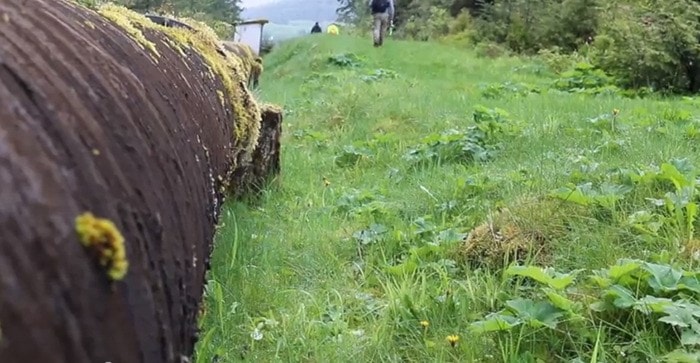A $150 million bill for a wastewater treatment plant and a $15 million bill for a new water dam for the city’s water supply is contributing to Prince Rupert’s approximate $280 million infrastructure deficit.
But neither project was among the initial list of 35 approved projects under the Clean Water and Wastewater Fund (CWWF) announced in late September.
A bilateral agreement signed by Amarjeet Sohi, federal Minister of Infrastructure and Communities and Peter Fassbender, B.C. Minister of Transportation and Infrastructure, has made more than $450 million of federal and provincial funding available to water-related projects across B.C. and represents a drastic reduction in municipality monetary contributions for large-scale projects.
Typically, local governments must contribute 33 per cent of the cost for a project to be completed with the federal (33 per cent) and provincial (33 per cent) governments for infrastructure investments that promote clean and reliable drinking water and sanitation.
The new agreement allows for the federal government to provide 50 per cent of the funding, with the province contributing 33 per cent, and local governments now only contributing 17 per cent of the costs instead of 33 per cent.
The initial list did not include any of Prince Rupert’s projects, but did include projects from Burns Lake and Fort St. James in B.C.’s north.
An application intake process has already started for additional projects in the province, with a deadline of Nov. 23. $313.5 million of remaining funding is available for those applications.
Prince Rupert Mayor Lee Brain said that it was because of another application for a Union of BC Municipalities (UBCM) funding program that Rupert was left off the initial list, but the city is in the process of submitting an application through the CWWF.
“We are making an application for that fund,” Mayor Brain said on Oct. 11.
“We’ve already gone through a couple other funds – particularly the UBCM fund has a water fund where they grant up to 100 per cent of water grants, whereas in this case there are certain percentages. So for the dam portion of our water grant, we wanted to see if we could try and get the majority of it paid for first.”
The mayor further explained that the government outlined the process that the city should apply for funding.
“When you work with the government they say if you’re going for this grant, go for it, and if you don’t get it, come back to us. So you can’t do both at the same time. UBCM in particular has these requirements, so that’s why we weren’t on that list. However, I’ve said to staff let’s get to that area as well,” he said.
The dam project had its first phase completed with $4.4 million in funding from the Build Canada Fund (BCF). $2.2 million was also contributed through the Prince Rupert Legacy Inc. fund. The city secured funding for the reconstruction and burial of the city’s water supply line and to build an access road to the dam.
Higher than normal lead volumes were found in Prince Rupert School District (SD52) schools’ water in early 2016, leading to $300,000 in upgrades and maintenance by SD52 and the Ministry of Education’s School Enhancement Program, which included district-wide water quality sampling, replacement of piping and fixtures, new lead reduction water fountains and automatic flush valves.
“Water in the City mains is tested regularly and has met the Guidelines for Canadian Drinking Water Quality for lead,” wrote Sandra Jones, SD52 superintendent in a letter to parents Sept. 19.
The wastewater treatment plant was mandated by the federal government to be installed by 2020 for Prince Rupert, however Mayor Brain doesn’t foresee that being financed or built by that time, and the city will seek an extension.
“At the moment we are moving along on that. It’s most likely going to be that we need an extension because there’s absolutely no way we’re going to have wastewater treatment by 2020. However, it’s good that the province and the feds are now giving more money ... to get these projects online. Rupert and Victoria in particular are two communities that are identical in this situation where we all have the same problem,” he said.
“[The deadline] is not meant to punish people, it’s just meant to get them going and moving forward. So at this time $150 million is quite the bill for us, which is another reason why we’re hoping to have some sort of economic activity happening in the community so that we can start to finance some of these big infrastructure projects.”
In February, city engineering coordinator Richard Pucci said the city’s goal is to replace Prince Rupert’s water supply system in the next five to 10 years with a new dam. The city also needs to replace its submarine lines in Seal Cove.
“This stuff is over 100 years old. It’s going to fail. It’s not a question of how, but a question of when and how much time we have left on it,” he said at a previous infrastructure meeting with Skeena MP Nathan Cullen.
A request for a funding application to the CWWF is set to appear on the Oct. 24 council agenda.
